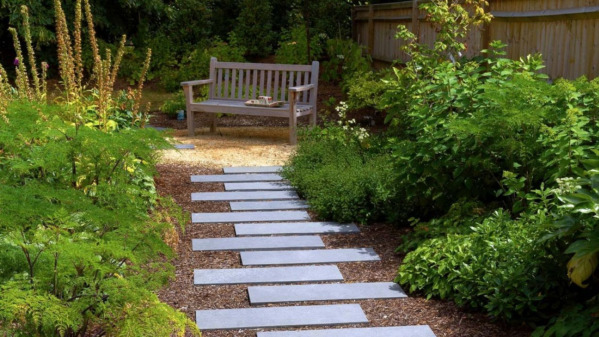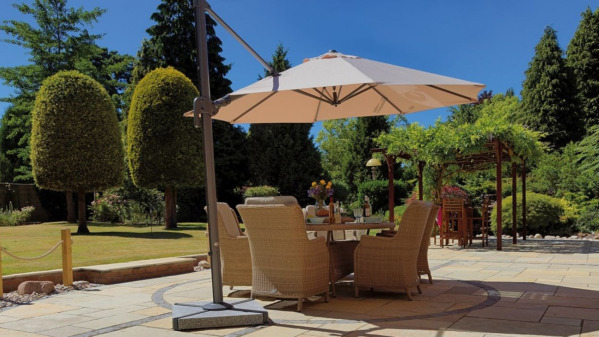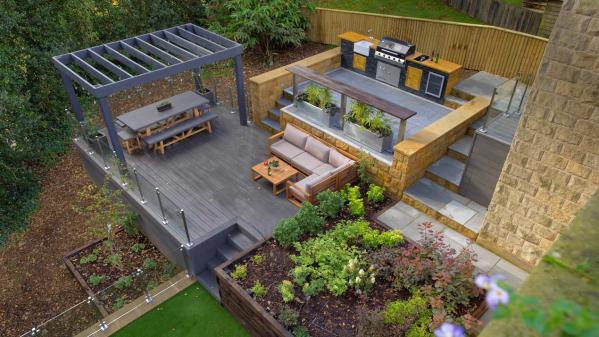A rooftop garden can be a perfect hideaway to view the surrounding area, entertain friends and family or simply enjoy some fresh air. But it needs a little planning and ingenuity. Here, we share some insights into how rooftop gardens have been used in the past and how they can bring a little life to modern buildings. We’ll look at the history, practicalities and functions of a rooftop garden or terrace and the ideas you can draw on to create an outdoor space of your own, regardless of its size or location.

Roof gardens in Antiquity
Early civilisations grew up around rivers like the Nile, the Euphrates or the Tiber, which meant agriculture and gardening prospered. People relied heavily on these things to survive but also knew there was pleasure and delight to be had in the open air. As a result, some rulers and important people in Rome and ancient Mesopotamia had high-tiered or terraced gardens where they could entertain visitors, friends and family.
The Villa of Mysteries in Pompeii is one such place, where an elevated terrace and an open courtyard were a place for horticulture and entertaining. Romans valued gardens as places to cultivate herbs and fruit, and one of the earliest works of Latin prose, De Agricultura, was a guide to Roman gardening. The style of garden found in places like the Villa of Mysteries was known as a ‘xystus’, a Greek word referencing the porticos that provided shade for these residential gardens.
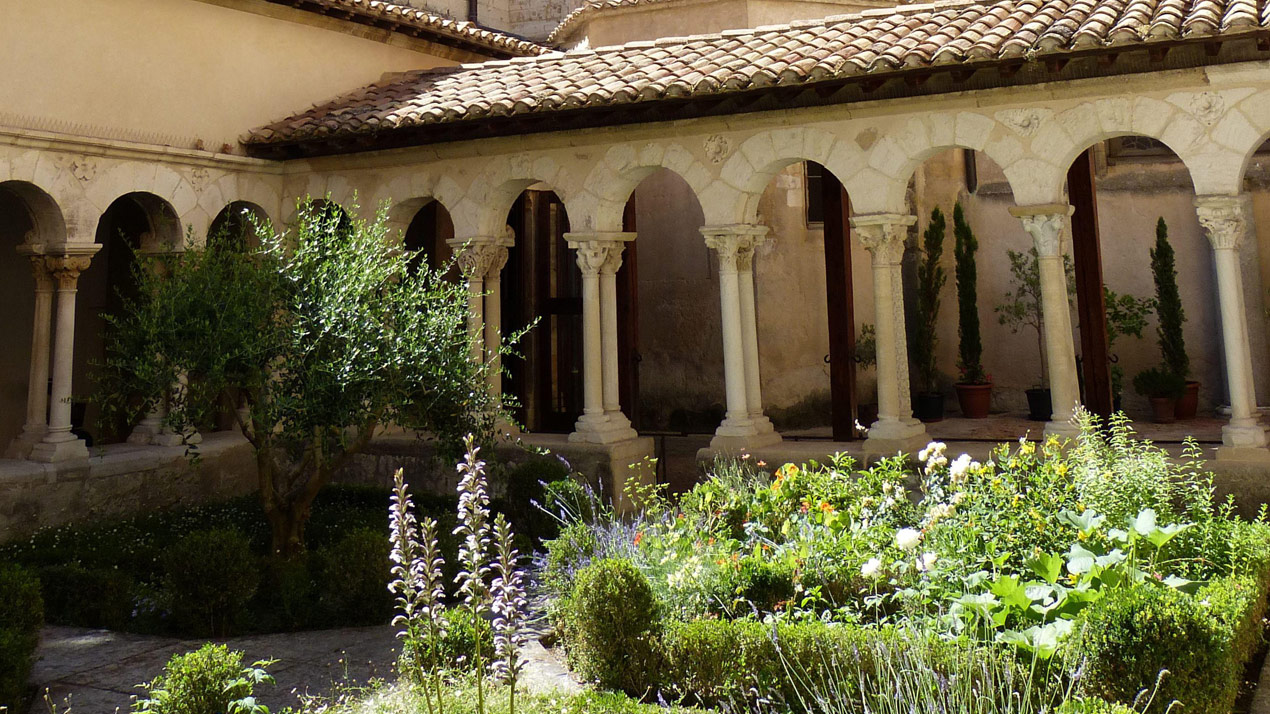
The most famous example of an early roof garden was the legendary Hanging Gardens of Babylon. Though it was listed as one of the seven ancient wonders of the world, all we know about these gardens come from ancient anecdotal evidence. A first-century Roman writer, Quintus Rufus, suggested that the gardens were designed to be reminiscent of mountain gardens in Medina. The entire structure was described as a series of terraces that had soil beds deep enough to plant trees, with a spectacular array of plants irrigated by means of an ‘Archimedes’ screw. This ingenious device was supposed to have carried water up from the nearby Euphrates and kept the gardens watered.

The modern rooftop garden
The age of city commerce brought with it an atmosphere of a modern Babylon, especially during the decadent interwar period of the 1920s and 1930s. The focus on opulence and pleasure during this time resulted in a renaissance in rooftop gardens, many of which can still be visited to this day.
In New York, the Rockefeller centre opened up what locals called ‘the secret gardens’ on the rooftop in 1935, whilst in London, Kensington Roof Gardens was opened in 1933. Another notable example of the city rooftop garden is the Selfridges roof terrace, which opened first in the late 1920s and hosted cafes, a mini-golf course, an all-girl gun club, and regular fashion shows in the evenings.
Today, it is not unusual to find roof terrace restaurants, clubs and bars in any city you go to. There are rooftop swimming pools and even rooftop farms or sustainability projects to be found. With such continued innovation, it seems that those designing roof and terraced gardens will have new and interesting ideas about how to deliver the tranquillity of a garden in an urban space.

Planning your garden
A great rooftop garden will look effortless and natural. But be in no doubt, it requires a great deal work and strategic planning to get it that way. Before we get into the fun and function of rooftop gardens, it is worth considering what you must plan for:

- Local building regulations
Though there are environmental and real estate benefits to rooftop gardens, local governments and planning authorities can shut down the construction. Be sure to consult with your local building regulator to get the go-ahead before planning your garden. The rest of this list will likely go into their decision. - Roof structure and material
Many rooftops are not made for residential use. The angle of your roof will dictate how rainwater is meant to run off, and the structure may not be designed to be load-bearing. Furthermore, materials that are great for providing affordable shelter may not endure heavy footfall or the weight of planters and other features of your garden. - Damp/Waterproofing
Regardless of how many plants you plan on growing in your rooftop garden, you will always likely need a great deal of water. However, even though most rooftops are designed to keep out the rain, a sudden upsurge in the amount of water used may end up causing damp patches. This is especially true of flat rooftops, which suffer from what is known as ‘ponding’ where the water no longer drains. Structurally, this can be very bad news, so ensure you know how the water is going to escape early on – appropriate run-off channels and floor sealing can make a lot of difference.
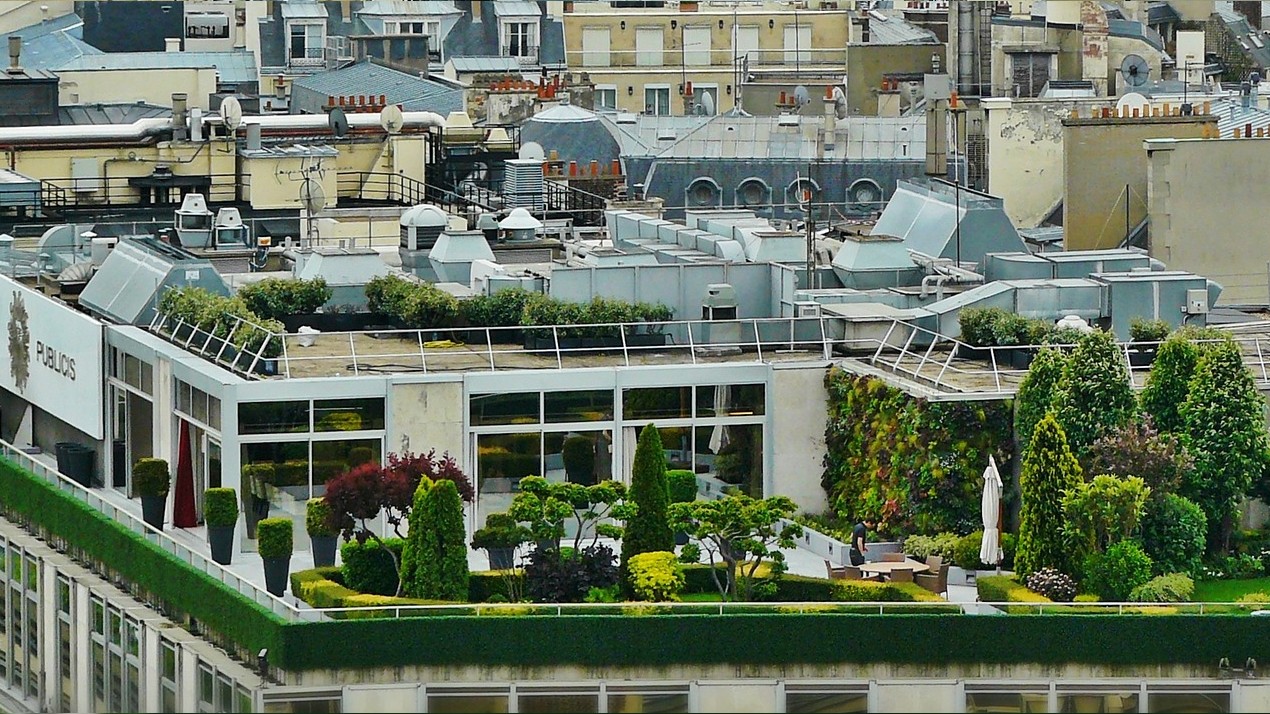
- Local conditions/weather
You should make a realistic assessment of what you can achieve in your climate. If you are somewhere that experiences high winds, for instance, you may be limited in how you can use your rooftop. Likewise, extreme heat can be very harmful to some kinds of plants, so you should first understand what can grow comfortably on your rooftop. Consider what kind of shelters to use, where the sunlight falls throughout the day and where there might be natural windbreaks already in place. - Local flora and fauna
Local government and environment agencies often insist that local wildlife and plant life aren’t disturbed. Consider the local ecology when planning your garden and how you might improve local biodiversity, such as the attraction of pollinators like bees. Conversely, think about how you can avoid interference from inquisitive birds and pests. Plants inevitably attract birds and rodents, so make a plan on how you can control their impact.

- Access
How you will enter the space is an important consideration, but you will also need to safely bring lighting, electricity, heating and water to your rooftop. Remember that all of these things will be exposed to the elements. In the case of electricity, you must be very cautious about how rainwater will interact with your fittings. Heating will need to be thoroughly checked, and it is worth consulting with local fire safety officers to ensure your roof will not be at risk of fire. - Privacy
One thing that local planning authorities look at carefully is how your rooftop may impact other people’s privacy. You should take measures to avoid overlooking someone else’s property and consider how your own privacy is impacted. This extends to how sound travels. You may soon find the sound of traffic gets annoying or that your rooftop bar may not be as welcome to others as it is to you!
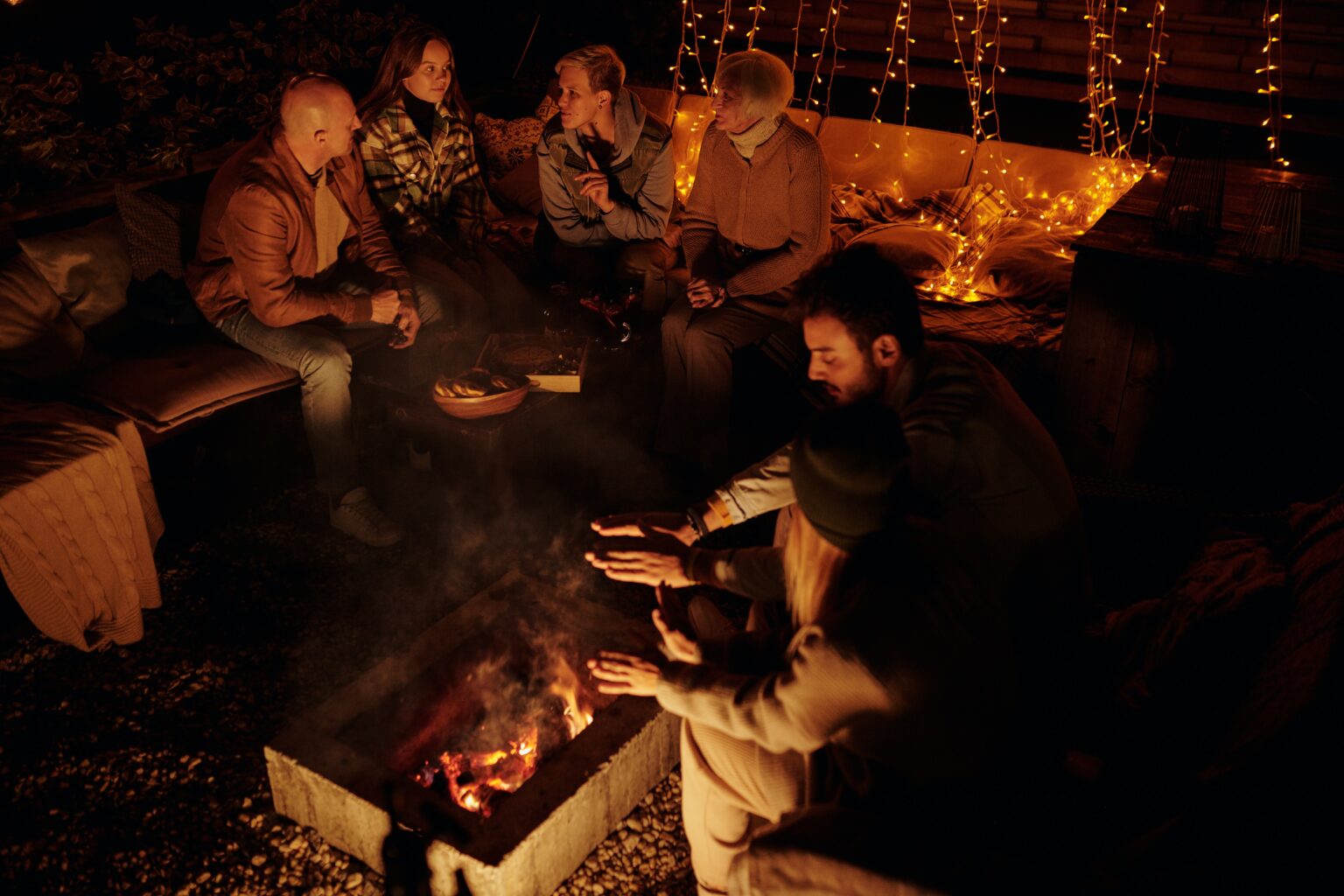
Function
How you plan your roof garden depends on what function you want it to have. What follows are a number of possible applications you can employ, with some ideas of how you can implement them. These functions are by no means exclusive, and you will likely come up with something wonderful once you appreciate the possibilities of your space:
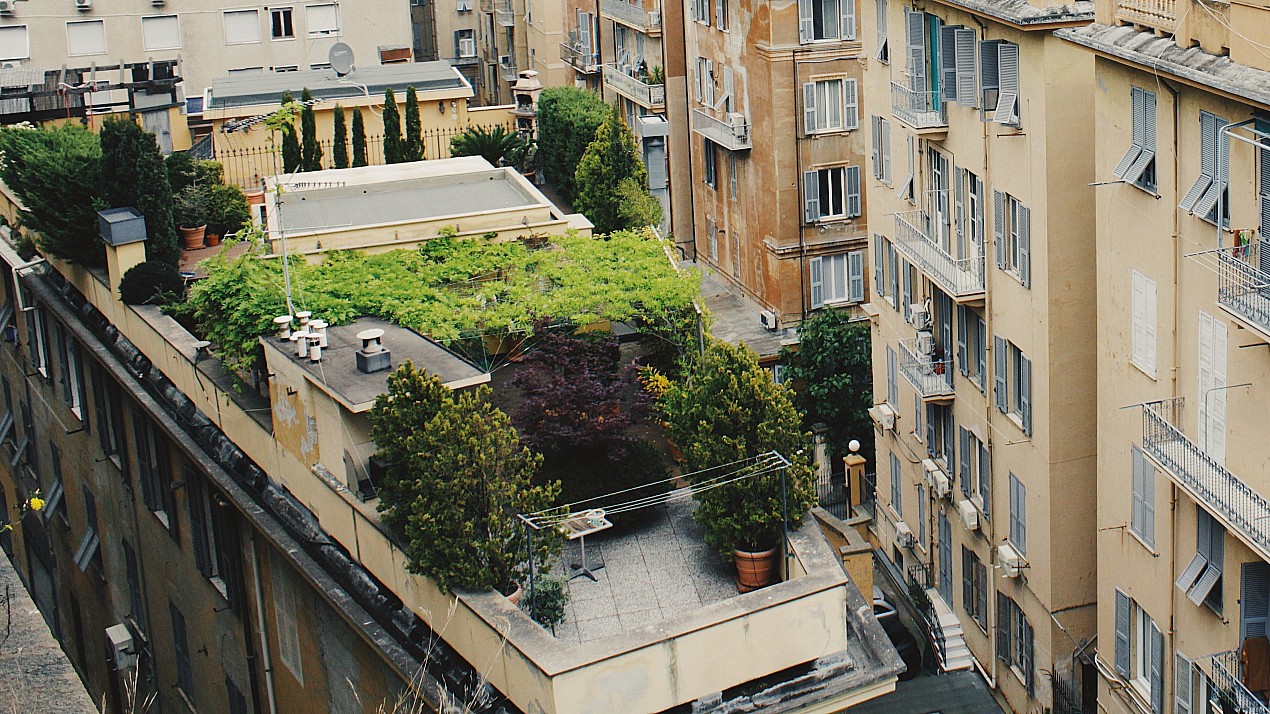
Planning your planters
When you are planning out your garden, you should begin with the layout, style and size of your planters.
Begin by researching and deciding which flowers, vegetables, fruit or other plants are suited to your local conditions and roof. Remember that some plants do better in the sun or shade than others, and you may need to account for seasonal variations. This will mean either choosing a range of plants or planters than can be moved easily.
For larger plants, you will naturally need larger planters so that they can put down roots. These will become centrepieces of your garden, around which you can theme your other features. Smaller plants in smaller planters will work to accent the other features of your garden. In both cases, try to envision how you will move about the garden and what you will see as you travel through the different spaces.
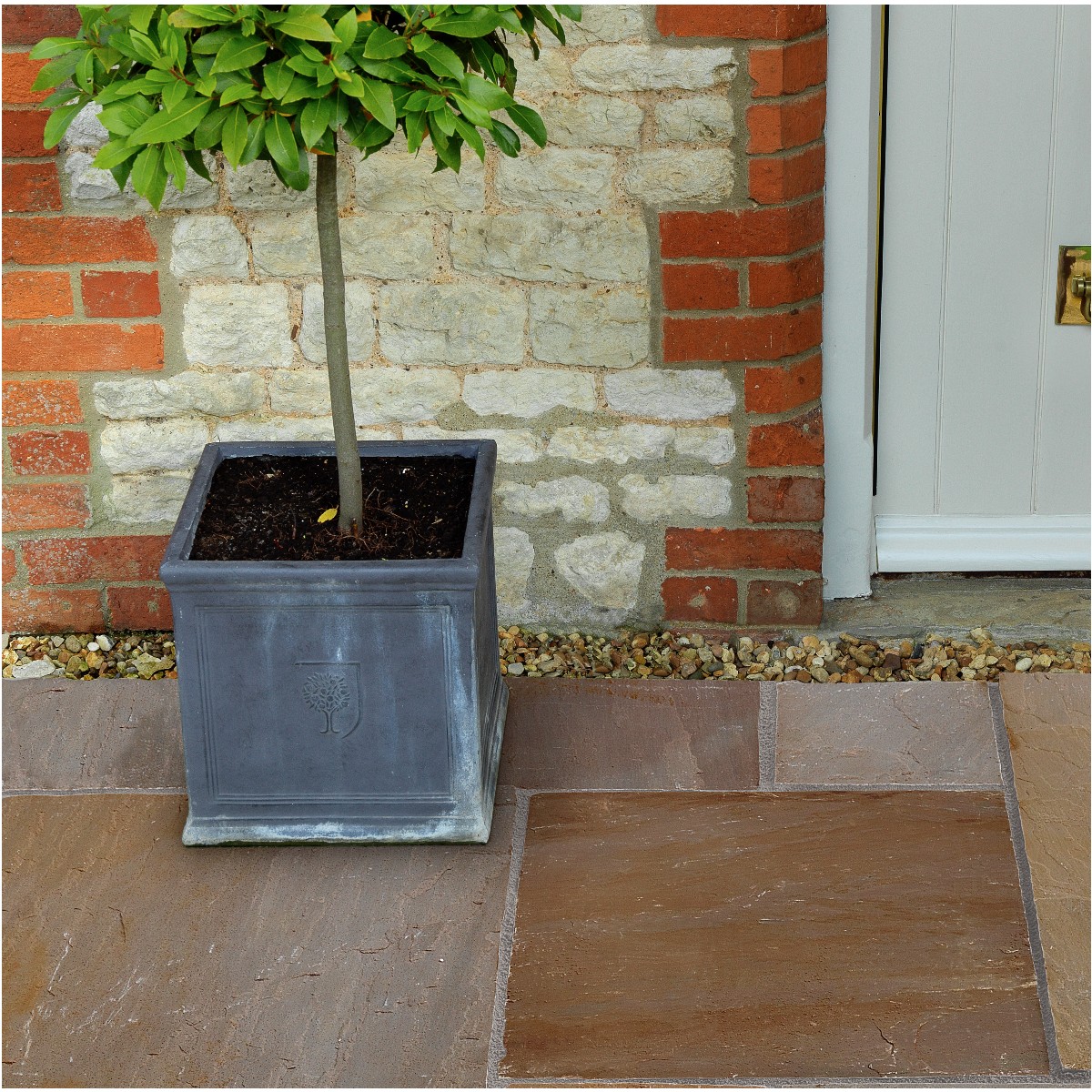
Water
The type of plant you choose will dictate how much water you will need, so plan out your watercourse or access route accordingly. If you are in a generally dry area and you want to grow plants that require a lot of water, you will benefit from a dedicated water source rather than ferrying water up and down or feeding a hose through your access point.
Rain catchment systems are an economical and sustainable method of ensuring you have enough water to irrigate your plants. It can be as simple as a barrel to collect water or soakaway systems, pumps and filtration units. Whatever system you use, be mindful that if there is a heavy downpour, your water collection unit may overfill, which will cause damage to your property.

Hydroponics
It is possible to grow your plants without the use of heavy planters or even soil if you employ a hydroponic system. These are water-based nutrient solutions that will give your plants all they need to thrive.
The trend for rooftop farms has made good use of hydroponics to grow vegetables, as it doesn’t require huge amounts of soil. It does require careful maintenance, however, so prepare to work hard if you decide to use hydroponics and expect a hefty water bill.
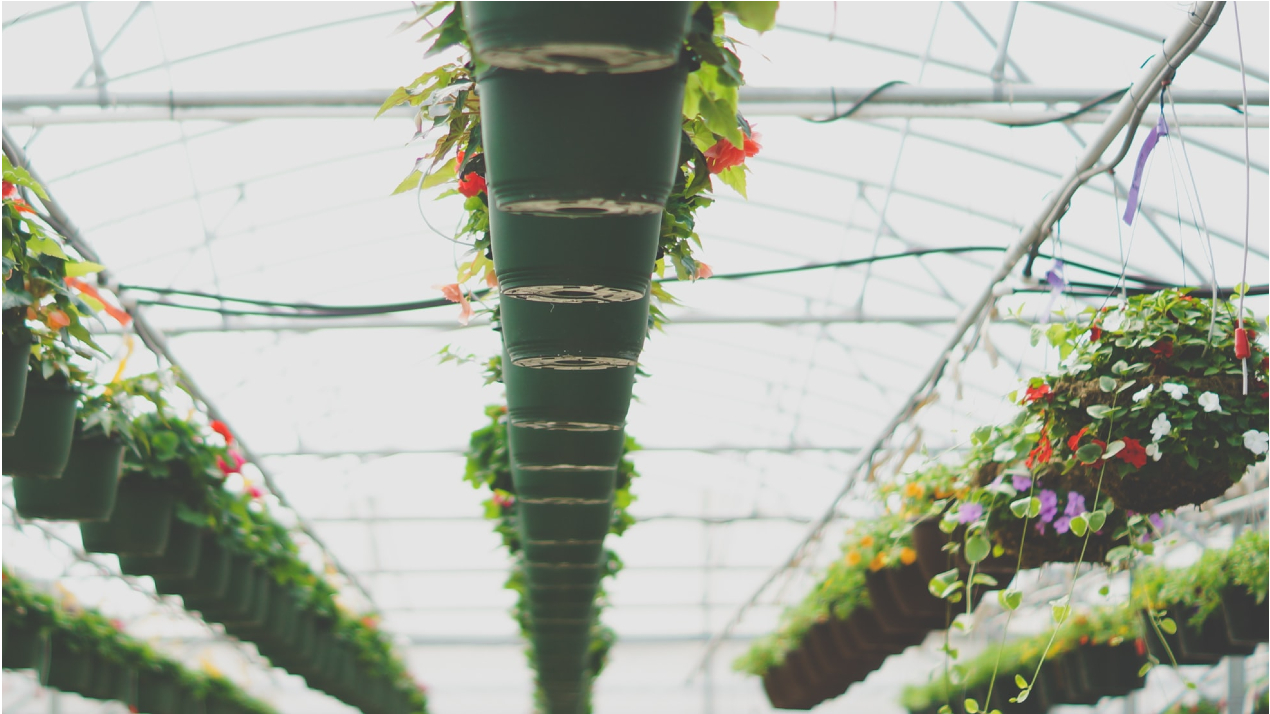
Storage and Shelter
Depending on what and how much you plan to grow, you might invest your money and space in a storage shed, greenhouse or shelter. You’ll have the chance to protect your seeds, plants and tools from extreme heat, wind, rain or frost.
Another environmental consideration in how you layout your plants and shelters are the kinds of wildlife in the area. Depending on how elevated your roof or terrace is, you may need to pest-proof your garden. Alternatively, you might want to attract certain creatures like bees or songbirds.

Bar/kitchen area
A rooftop garden doesn’t have to be a place to work on your horticulture but a place of leisure and enjoyment as well. It can be a place of cookery, food, drink, and conversation with your nearest and dearest. However, for many people, the issue of weather can put them off creating a rooftop bar or kitchen.
In fact, weatherproofing your rooftop kitchen, even in variable climates like the UK, is relatively straightforward. It requires you to think plan around four main areas:
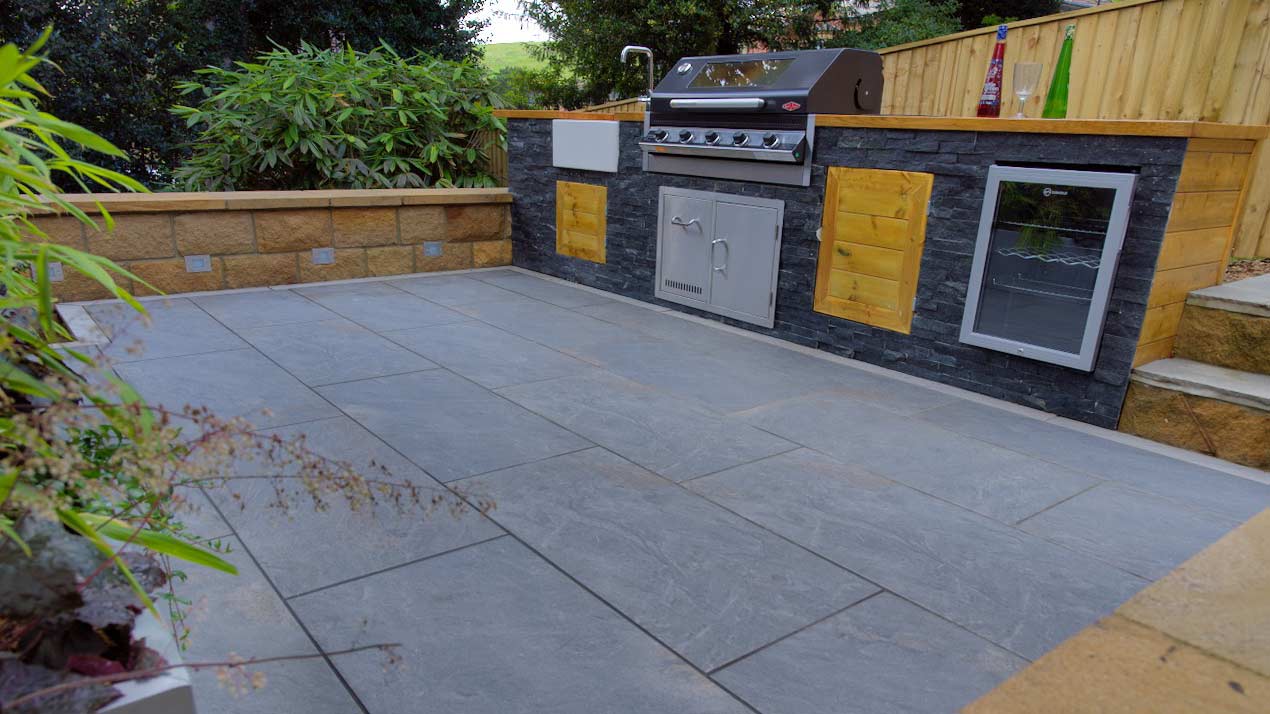
- Shelter – Employ awnings or parasols to keep out the sun or rain. Walls or windbreak plants such as dwarf mountain pines will reduce the impact of the wind.
- Heat – Heating requires some strategic thinking, as there are often many local safety regulations to avoid the risk of fire. Check with your local planning authority about what you are allowed, then make a firm plan as to where you would like your heating elements. This goes for both cooking facilities and outdoor heaters.
You may find it is possible to create a fire pit or brazier on your rooftop or terrace. In this case, you should observe how it will interact with environmental elements, especially the wind. Flaming coals or burning logs may flare up when a sudden gust comes along, so it would be useful to have the fire behind a windbreak, stone wall or otherwise sheltered, and sitting on flooring that is highly heat resistant, like slate.

- Plumbing – Putting in plumbing requires you to have good knowledge of your building and the layout of existing pipes and mechanisms. Have a clear idea of where you would like your bar, gas facilities or faucets and be prepared for a plan b if it is not possible to execute your ideal scenario. Ensure that only a qualified professional carries out the work.
Alternatively, if you cannot afford to have plumbing routed for your rooftop garden, there are other methods of cookery and drinks preparation. For cookery, you can invest in portable gas canisters (which should be stored securely) linked up to your cooking elements. Otherwise, a simple charcoal barbeque can work just as well. Providing you have electricity, you can stock your bar with bottled drinks in a fridge or ice buckets and drinks that don’t need refrigerating behind the bar.
- Electricity – Electricity should, above all, be insulated against rain and frosty weather. Have a qualified electrician look at your circuitry and the building regulations to ensure the utmost safety. It is vital that you have safety features such as a residual current device to ensure that if there is a fault, the current will cut out and avoid shock.

Recreation and Activities
Your roof garden should be an extension of your living space. It can be a place where you indulge in your hobbies, interests and the things that bring you joy. Not only can you enjoy the delights of gardening or food and drink, but you should see it as a place of leisure, pleasure and fun.
You can include areas for exercise. A paved area sheltered from the elements can be a great place to put down a mat to practice tai chi, judo or karate. You can lay out a wooden or wooden effect floor and work up a sweat with aerobics, spin or a running machine.

Low bounce ball games like skittles, croquet or mini golf can be a lot of fun, though it’s important to ensure there isn’t the opportunity for balls to bounce and overshoot the roof edge. Or lay down a giant chessboard, Jenga stack, or other family games like giant snakes and ladders, quoits or dominos. Put down a non-slip floor, set up some weatherproof lighting, and party the night away on a dancefloor to accompany your bar.
If you prefer to use your garden space for something a bit more low-energy, you can set up a yoga sanctuary where you can meditate, practise mindfulness or simply enjoy the scents and sights of your flowers and plants. Set up an awning with a swing chair or a comfortable cushioned area as a reading nook. If the light and weather are good, you can use the roof as an outdoor studio and set up a place to paint or draw, or set up a desk or workspace if you like to write, and use the fresh air, sights and sounds as a source of inspiration.

Views
One of the greatest joys of the roof garden is the vantage point it gives you to view your surrounding area. It can give you an unparalleled view of the area you live, whether urban or rural and the life and movement of the world around you. From this elevated position, you gain a new perspective, a place to centre yourself and return from the roof with a fresh outlook.
When you live in the countryside, especially if it is remote, it would be lovely to have a full 360° view of the area. However, this might not always be possible, and such a sweeping vista will bring with it high winds and exposure to poor weather. You might instead consider the particular views you would like to enjoy and build your shelter around them. Alternatively, build a central raised terrace, and you will have a viewing platform for a full view of your area.
However, the skylines of our major cities can be just as inspirational and even moving. You’ll want to be selective about what views you highlight, and your planning authority will have strict regulations to ensure your neighbours retain their privacy. As with countryside views, a viewing platform can offer new perspectives on the city horizon, and you might offer a display guide to the landmarks seen from your roof. A rooftop is an excellent way of taking a tour of your city’s most interesting features without having to travel at all!

Finally, your rooftop is an ideal place to enjoy the skies above. Lay out comfortable but sturdy furniture or foldaway deckchairs and turn your roof into your own private beach, and indulge in a bit of cloud-watching. Bask in the sun and listen to the noise of the area, chance conversations in the street below or the wind as it moves through the trees.
Then, in the evenings, set up your heater, wrap up warm and watch as the sky changes from blue to amber and all the rich colours of the setting sun. You can make the heavens a centrepiece of your garden with a sun or moondial or an armillary sphere. If it’s clear, you might sit out under the stars and get familiar with the constellations with a star map specific to your area. Set up a simple telescope trained on the galaxies above us, and your rooftop garden can become your own private observatory.


